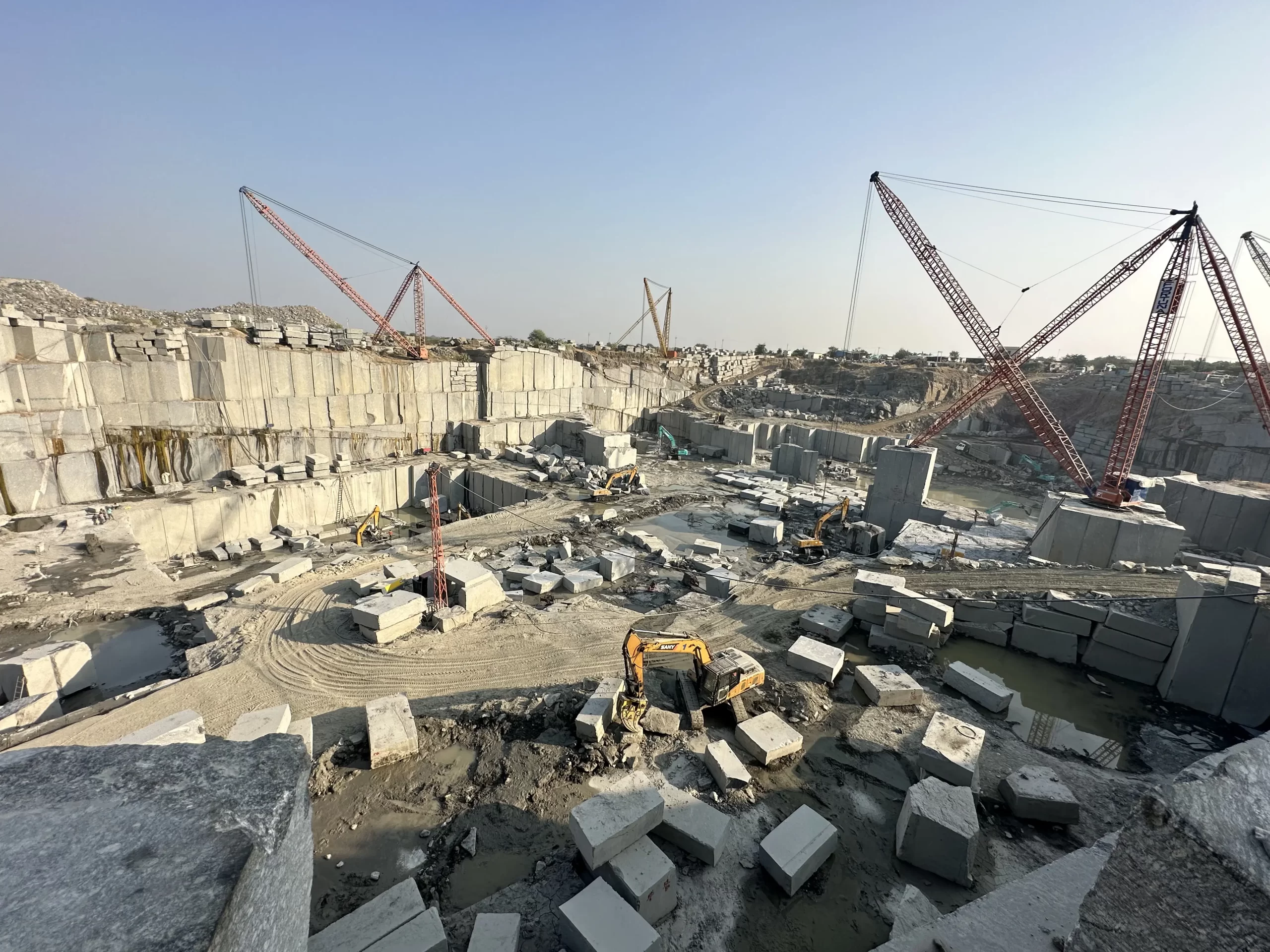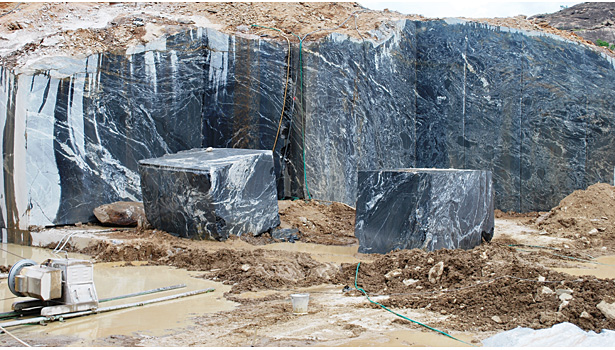Granite Quarries in South Africa Marvels: Discovering the Quarry Landscape
Granite Quarries in South Africa Marvels: Discovering the Quarry Landscape
Blog Article
Unleashing the Beauty and Sturdiness of Granite Quarry: A Trip With Time
Granite quarries stand as testimonies to both the geological marvels of our planet and the enduring craftsmanship of humankind. The journey with time that granite quarrying stands for is an engaging narrative of development, determination, and the complex dancing between nature and market. Comprehending the beginnings of this age-old practice, the evolution of techniques and tools employed, and the modern-day significance of granite quarrying unveils a tapestry abundant in background and significance. As we peel off back the layers of time and look into the complex world of granite quarrying, we uncover a tale that not just showcases the beauty and sturdiness of this magnificent rock however likewise clarifies the profound influence it has actually carried worlds past and present.

The Beginnings of Granite Quarrying
In the record of history, the origins of granite quarrying can be mapped back to old civilizations where the mission for sturdy building materials fueled the introduction of this timeless craft. From the stunning frameworks of old Egypt to the grandiose temples of Greece, granite has been respected for its toughness, elegance, and longevity. The Egyptians, with their advanced quarrying methods, were amongst the initial to remove granite on a large scale, using it to construct significant pyramids and detailed statuaries that have actually withstood the examination of time.
As human beings evolved, so did the methods of quarrying granite. The Romans even more refined the methods, establishing tools and machinery to extract and transport granite over large distances for their architectural projects. The resilience and aesthetic appeal of granite made it a prized product for sanctuaries, monoliths, and sculptures throughout the ages.
Today, the heritage of old quarrying methods resides on, with contemporary technology enhancing efficiency while still admiring the workmanship of our forefathers. The origins of granite quarrying work as a testament to human resourcefulness and the long-lasting appeal of this worthy stone.
Devices and Techniques of Quarrying
Discovering the careful craftsmanship of granite quarrying introduces an innovative range of devices and methods meticulously sharpened over centuries. Quarrying granite needs specialized tools to draw out the rock from the earth successfully and with precision. Modern quarries make use of diamond-wire saws, high-powered drills, and dynamites to damage apart the granite in a controlled fashion. These tools enable the extraction of huge blocks of granite while reducing waste and ecological effect.
In addition to sophisticated equipment, conventional hand devices are still used in specific quarrying procedures to ensure delicate accuracy in removing the stone. Chisels, hammers, and wedges are utilized by experienced quarry employees to different granite blocks along natural fractures, a strategy that has been given via generations.
Furthermore, methods such as piercing upright and straight holes for placing plumes and wedges, along with the regulated use of dynamites in calculated areas, enable quarry workers to extract granite effectively while protecting the honesty of the rock. The consistency between modern technology and conventional craftsmanship is crucial to the lasting quarrying of granite for generations ahead.
Advancement of Granite Quarries
The transformation of granite quarries in time exposes an interesting narrative of technological improvement and market development. From old times where hands-on devices like blades and hammers were utilized to remove granite blocks, to the commercial change presenting steam-powered machinery for faster quarrying, the development of granite quarries has been marked by significant developments. In recent decades, the advent of diamond cord saws and progressed exploration modern technologies has actually changed the removal procedure, enabling much more accurate cuts and reduced wastage of basic material.

Granite Quarrying in Modern Times
The progression of granite quarrying methods from historical dependence on guidebook tools to the innovative methods of modern times highlights an amazing trip of technical technology and sustainability techniques within the sector. In modern granite quarrying, advanced machinery such as diamond wire saws, high-capacity excavators, and digital exploration tools have actually reinvented the extraction process. These devices boost performance, precision, and safety, allowing for bigger amounts of granite to be drawn out in a shorter duration contrasted to standard techniques.
Furthermore, modern quarrying techniques prioritize sustainability and environmental stewardship - granite quarries in south africa. Firms are progressively embracing environmentally friendly approaches like water reusing systems, dust suppression modern technologies, and rehab plans for worn down quarries. These efforts aim to decrease the environmental impact of granite removal, conserve natural deposits, and restore quarried landscapes to their initial state
Additionally, the assimilation of electronic technologies like drones, general practitioner tracking, and 3D modeling has actually enabled quarry drivers to enhance procedures, enhance decision-making, and make certain the sustainable management of sources. By embracing advancement and sustainability, the go granite quarrying industry in modern-day times remains to grow while supporting environmental responsibility.

Preserving and Safeguarding Granite Quarries
In the middle of the progressing landscape of granite quarrying techniques, conservation and defense of these valuable natural sites have become critical issues for market stakeholders and environmental advocates alike. As granite quarries continue to be a crucial source of this sought after stone, it is crucial to take on lasting approaches that guarantee their durability and secure surrounding communities.
Preserving granite quarries involves implementing reliable recovery strategies to bring back the land post-extraction. granite quarries in south africa. This process view it now includes improving the surface, replanting native greenery, and creating habitats for wild animals to grow. By recovering quarries to their natural state, the environmental impact can be reduced, and the beauty of these landscapes can sustain for future generations to value
Additionally, safeguarding granite quarries requires enforcing laws that control accountable quarrying practices. This includes tracking water high quality, controlling dirt emissions, and taking care of noise levels to minimize disturbances to the environment and nearby areas. Collective efforts in between market gamers, governmental bodies, and preservation groups are crucial in promoting these requirements and guaranteeing the sustainable use granite quarries.
Final Thought
To conclude, the trip with time in granite quarrying exposes the beginnings, devices, strategies, and advancement of this practice. The modern age has brought improvements in quarrying methods, enabling the conservation and security of these important all-natural sources. It is very read important to proceed to support sustainable techniques to guarantee the charm and durability of granite quarries for future generations to appreciate.
Report this page